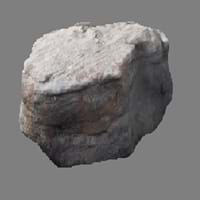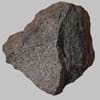Definition
Obsidian is a naturally occurring volcanic glass formed as an extrusive igneous rock. It is produced when felsic lava extruded from a volcano cools rapidly with minimum crystal growth
Gritstone or grit is a hard, coarse-grained, siliceous sandstone
Origin
Ethiopia
Pennines, England
Discoverer
Obsius
J.J. Ferber
Etymology
From Latin obsidianus, misprint of Obsianus (lapis) (stone) of Obsius
From Grit + Stone
Class
Igneous Rocks
Sedimentary Rocks
Sub-Class
Durable Rock, Medium Hardness Rock
Durable Rock, Hard Rock
Group
Volcanic
Not Applicable
Other Categories
Opaque Rock
Coarse Grained Rock, Opaque Rock
Color
Black, Blue, Brown, Green, Orange, Red, Tan, Yellow
Beige, Black, Brown, Colourless, Cream, Dark Brown, Green, Grey, Light Green, Light to Dark Grey, Pink, Red, White, Yellow
Durability
Durable
Durable
Scratch Resistant
Yes
Yes
Appearance
Shiny
Layered and Foliated
Interior Uses
Decorative Aggregates, Interior Decoration
Countertops, Decorative Aggregates, Homes, Interior Decoration
Exterior Uses
Garden Decoration
As Building Stone, Garden Decoration, Office Buildings, Paving Stone
Other Architectural Uses
Not Yet Used
Curbing
Construction Industry
Arrowheads, Cutting Tool, Knives, Scrapers, Spear Points
Construction Aggregate, Roadstone
Medical Industry
Surgery
Not Yet Used
Antiquity Uses
Artifacts, Jewellery
Artifacts, Monuments, Sculpture
Commercial Uses
Creating Artwork, Mirror, Used in aquariums
An Oil and Gas Reservoir, As a Feed Additive for Livestock, Gemstone, Metallurgical Flux, Production of Lime, Soil Conditioner, Source of Magnesia (MgO), Tombstones
Types
Fireworks Obsidian, Mahogany, Sheen Obsidian, Snowflake obsidian and Velvet Peacock Obsidian
Not Available
Features
Blocks negativity, Helps to protect against depression
Available in Lots of Colors and Patterns, Generally rough to touch, Very fine grained rock
Archaeological Significance
Monuments
Not Yet Used
Used
Famous Monuments
Not Applicable
Data Not Available
Sculpture
Not Yet Used
Used
Famous Sculptures
Not Applicable
Data Not Available
Pictographs
Used
Not Used
Petroglyphs
Used
Not Used
Figurines
Not Yet Used
Used
Formation
When the lava is released from volcano, it undergoes a very rapid cooling which freezes the mechanisms of crystallization. The result is a volcanic glass with a uniform smooth texture.
Gritstone is a type of sedimentary rock which was formed on the floors of wide river deltas where the grit deposits were laid down, with every tide or flood dumping another layer of sediment.
Mineral Content
Not Available
Calcite, Clay Minerals, Feldspar, Micas, Quartz
Compound Content
Aluminium Oxide, CaO, Iron(III) Oxide, FeO, Potassium Oxide, MgO, MnO, Sodium Oxide, Phosphorus Pentoxide, Silicon Dioxide, Titanium Dioxide
Aluminium Oxide, CaO, Iron(III) Oxide, Potassium Oxide, MgO, Sodium Oxide, Silicon Dioxide
Types of Metamorphism
Burial Metamorphism, Cataclastic Metamorphism, Contact Metamorphism
Not Applicable
Types of Weathering
Biological Weathering, Chemical Weathering, Mechanical Weathering
Biological Weathering, Chemical Weathering, Mechanical Weathering
Types of Erosion
Chemical Erosion, Coastal Erosion, Glacier Erosion
Chemical Erosion, Coastal Erosion
Grain Size
Not Applicable
Coarse Grained
Fracture
Conchoidal
Conchoidal
Porosity
Very Less Porous
Highly Porous
Cleavage
Non-Existent
Perfect
Toughness
Not Available
Not Available
Specific Gravity
2.6-2.7
2.250
Transparency
Translucent
Opaque
Density
2.6 g/cm3
2.2 g/cm3
Resistance
Heat Resistant, Impact Resistant
Heat Resistant, Impact Resistant, Pressure Resistant
Deposits in Eastern Continents
Asia
Afghanistan, Indonesia, Japan, Russia
China, India, Kazakhstan, Mongolia, Russia, Uzbekistan
Africa
Kenya
Namibia, Nigeria, South Africa
Europe
Greece, Hungary, Iceland, Italy, Turkey
Austria, Denmark, Germany, Great Britain, Netherlands, Poland, Sweden, Switzerland, United Kingdom
Others
Not Yet Found
Greenland
Deposits in Western Continents
North America
Canada, Mexico, USA
Canada, USA
South America
Argentina, Chile, Ecuador, Peru
Brazil
Deposits in Oceania Continent
Australia
New Zealand
New South Wales, New Zealand, Western Australia
All about Obsidian and Gritstone Properties
Know all about Obsidian and Gritstone properties here. All properties of rocks are important as they define the type of rock and its application. Obsidian belongs to Igneous Rocks while Gritstone belongs to Sedimentary Rocks.Texture of Obsidian is Glassy whereas that of Gritstone is Earthy. Obsidian appears Shiny and Gritstone appears Layered and Foliated. The luster of Obsidian is vitreous while that of Gritstone is dull. Obsidian is available in black, blue, brown, green, orange, red, tan, yellow colors whereas Gritstone is available in beige, black, brown, colourless, cream, dark brown, green, grey, light green, light to dark grey, pink, red, white, yellow colors. The commercial uses of Obsidian are creating artwork, mirror, used in aquariums and that of Gritstone are an oil and gas reservoir, as a feed additive for livestock, gemstone, metallurgical flux, production of lime, soil conditioner, source of magnesia (mgo), tombstones.










